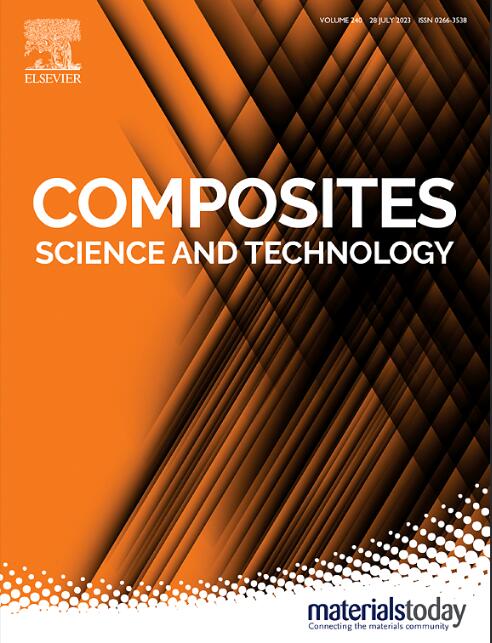A structure-integrated nanocomposite sensor system capable of simultaneous measurement of omnidirectional strain and temperature
IF 8.3
1区 材料科学
Q1 MATERIALS SCIENCE, COMPOSITES
引用次数: 0
Abstract
Strain-based structural health monitoring (SHM) systems are widely used for composite structures, given the unpredictable failure mechanisms associated with their heterogeneous nature. However, conventional strain sensors are constrained by their unidirectional sensitivity and their inability to differentiate strain from temperature effects without additional sensors, leading to complex configurations and extensive wiring. To overcome these limitations, a carbon nanotube (CNT)-based omnidirectional sensing system was developed as a structurally integrated nanocomposite surfacing layer for composite structures. This novel sensor system enables the detection of strain in all directions using a single nanocomposite sensor, while simultaneously measuring temperature to isolate its effects. Experimental results demonstrated that the sensor accurately measured the full in-plane strain tensor under tensile loading, closely aligning with reference data from a 3-element strain gauge rosette. It also exhibited high temperature accuracy, with a maximum error of 0.3%. By reducing the number of required sensors and wiring while maintaining precise measurements, this nanocomposite sensor system significantly simplifies SHM configurations. These findings underscore the potential of the CNT-based sensing system as a streamlined, efficient solution for aerospace and other advanced applications requiring reliable, multi-functional SHM systems.

一种能同时测量全向应变和温度的结构集成纳米复合材料传感器系统
基于应变的结构健康监测(SHM)系统被广泛应用于复合材料结构,因为它们具有不可预测的破坏机制。然而,传统的应变传感器受到其单向灵敏度的限制,并且在没有额外传感器的情况下无法区分应变和温度效应,从而导致复杂的配置和广泛的布线。为了克服这些限制,开发了一种基于碳纳米管(CNT)的全向传感系统,作为复合材料结构的结构集成纳米复合材料表面层。这种新型传感器系统可以使用单个纳米复合材料传感器检测各个方向的应变,同时测量温度以隔离其影响。实验结果表明,该传感器能准确地测量出拉伸载荷下的平面内全应变张量,与三维应变片花环的参考数据基本一致。它还具有较高的温度精度,最大误差为0.3%。通过减少所需传感器和布线的数量,同时保持精确的测量,这种纳米复合传感器系统显着简化了SHM配置。这些发现强调了基于碳纳米管的传感系统作为航空航天和其他需要可靠、多功能SHM系统的先进应用的流线型、高效解决方案的潜力。
本文章由计算机程序翻译,如有差异,请以英文原文为准。
求助全文
约1分钟内获得全文
求助全文
来源期刊

Composites Science and Technology
工程技术-材料科学:复合
CiteScore
16.20
自引率
9.90%
发文量
611
审稿时长
33 days
期刊介绍:
Composites Science and Technology publishes refereed original articles on the fundamental and applied science of engineering composites. The focus of this journal is on polymeric matrix composites with reinforcements/fillers ranging from nano- to macro-scale. CSTE encourages manuscripts reporting unique, innovative contributions to the physics, chemistry, materials science and applied mechanics aspects of advanced composites.
Besides traditional fiber reinforced composites, novel composites with significant potential for engineering applications are encouraged.
 求助内容:
求助内容: 应助结果提醒方式:
应助结果提醒方式:


